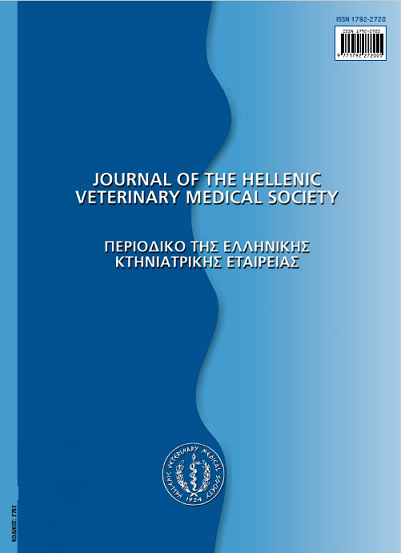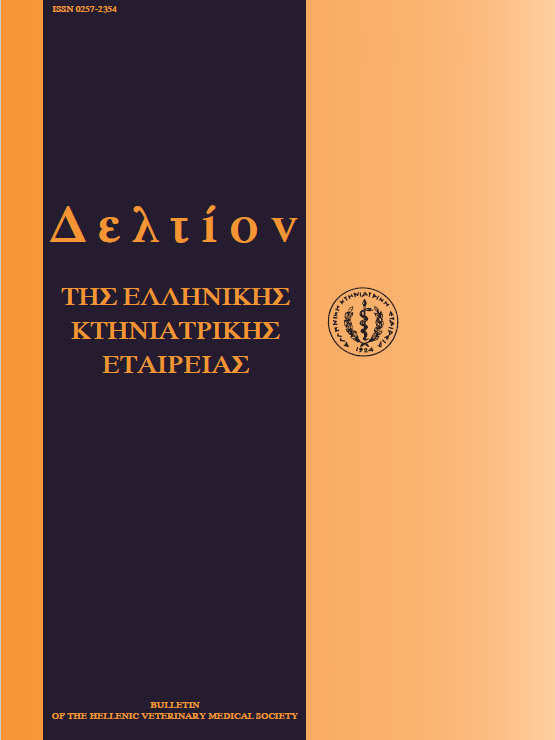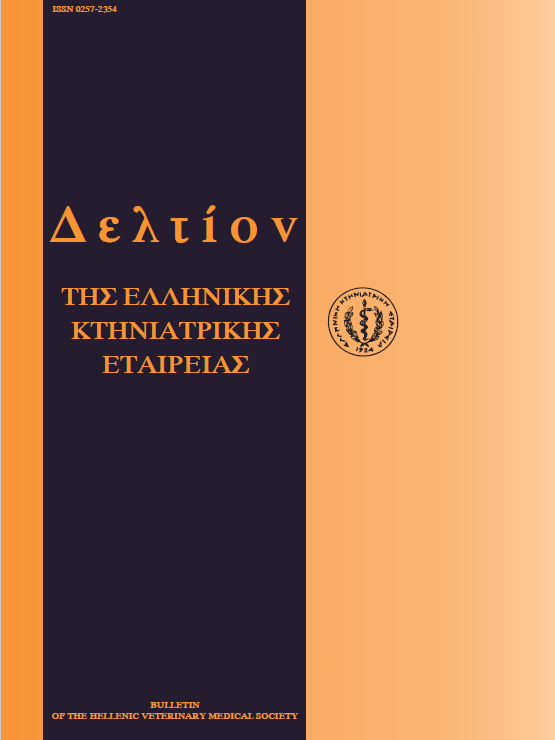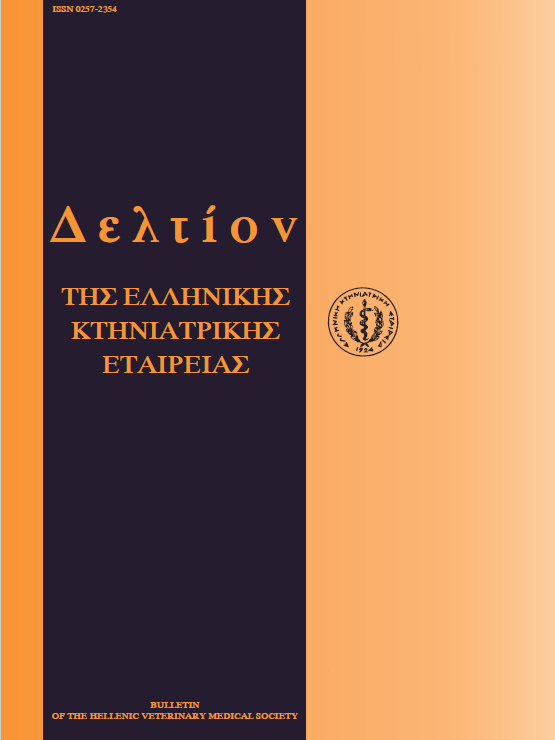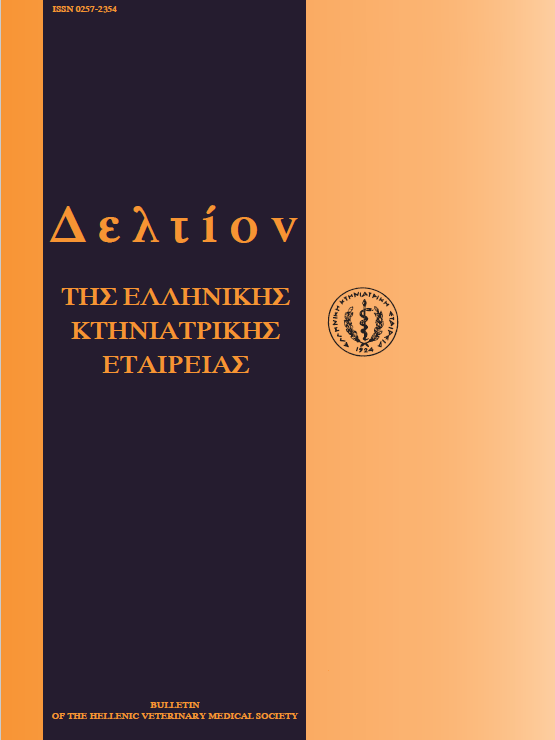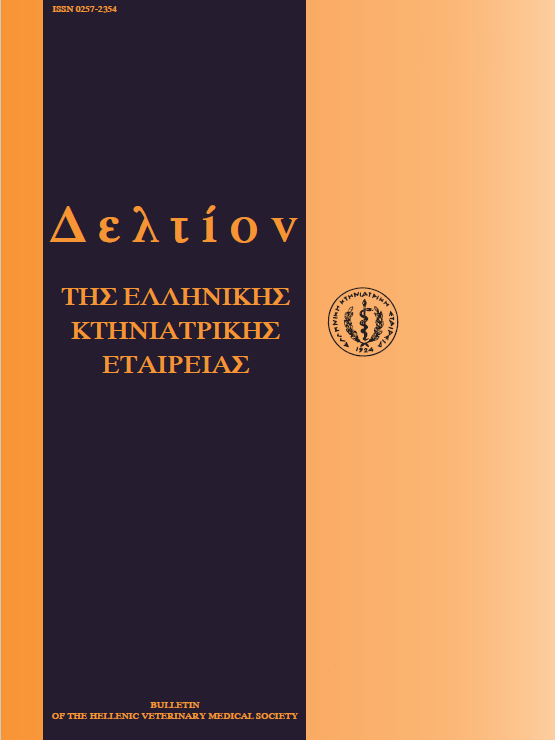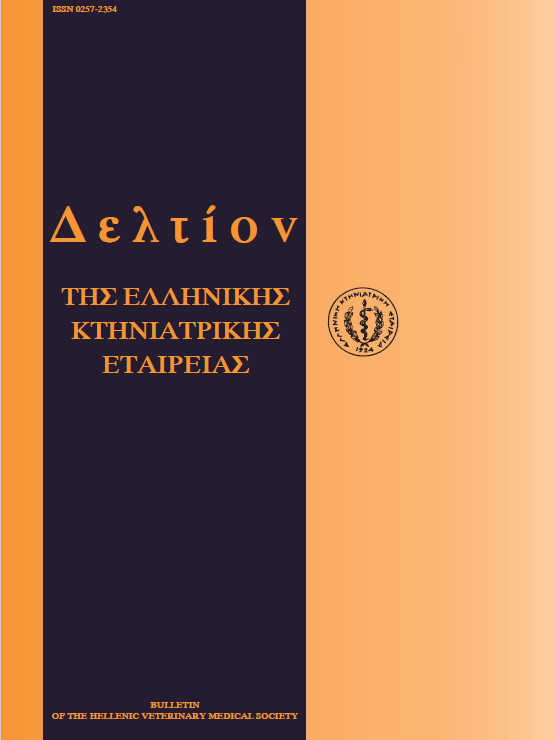Translacteal infection of baby calves, feeder pigs and puppies during lactation
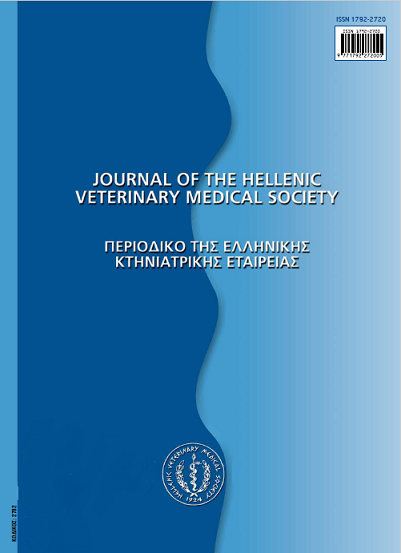
Abstract
The present study examines the probability of translacteal transmission via colostrum of gastrointestinal nematode infections in baby calves, feeder pigs and puppies. Colostrum samples from dairy cows, sows and bitches were examined for the presence of larvae. The results of the study are as follows: The colostrum of 12 cows out of 342 examined was infected (3,5%) and the larvae identified were Toxocara, vitulorum, Strongyloides sp. And Bunostomum sp. The colostrum of 2 sows out of 125 examined was infected with larvae of Strongyloides sp. (1,6%). The colostrum of 123 bitches out of 217 examined (56,7%) was shown to be positive for Toxocara canis, Ancylostoma sp. and Strongyloides sp.
Article Details
- How to Cite
-
GEORGOULAKIS (Α.Ε. ΓΕΩΡΓΟΥΛΑΚΗΣ) A. E., PAPAZACHARIADOU (Μ. ΠΑΠΑΖΑΧΑΡΙΑΔΟΥ) M., GOLOMAZOU (E. ΓΚΟΛΟΜΑΖΟΥ) E., & THEODORIDIS (Ι. ΘΕΟΔΩΡΙΔΗΣ) Y. (2017). Translacteal infection of baby calves, feeder pigs and puppies during lactation. Journal of the Hellenic Veterinary Medical Society, 54(1), 21–27. https://doi.org/10.12681/jhvms.15214
- Issue
- Vol. 54 No. 1 (2003)
- Section
- Research Articles
Authors who publish with this journal agree to the following terms:
· Authors retain copyright and grant the journal right of first publication with the work simultaneously licensed under a Creative Commons Attribution Non-Commercial License that allows others to share the work with an acknowledgement of the work's authorship and initial publication in this journal.
· Authors are able to enter into separate, additional contractual arrangements for the non-exclusive distribution of the journal's published version of the work (e.g. post it to an institutional repository or publish it in a book), with an acknowledgement of its initial publication in this journal.
· Authors are permitted and encouraged to post their work online (preferably in institutional repositories or on their website) prior to and during the submission process, as it can lead to productive exchanges, as well as earlier and greater citation of published work.



